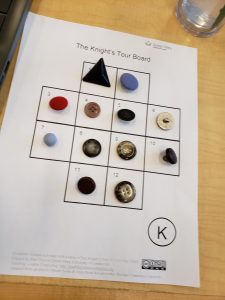Computational Thinking with Carrie Antoniazzi
Carrie Antoniazzi from Science World is our guest speaker this week. She facilitates professional learning BC educator through Science World as a “Tech Up Learning Specialist”. The speaker discusses computational thing as a problem solving process in math, computer, science and even in other aspect like dance for example. The Computer Education of BC came up with six views while working with the ministry of education. The six views is:
Logical reasoning.
Developing algorithms
Breaking problems into steps
Finding patterns and generalizing
Use of abstraction
Evaluation.
Logical reasoning is breaking down complex problems into smaller more manageable bit and keeping in mind of the end goal. For instance, the play of Romeo and Juliet performance. There is different part to the play, the customer, location, the character as well as many other part that will be involves in putting the play together.
Developing algorithm. In creating this model all the parts are working together. It is an abstraction of taking a detail of an information and taking what you need. All the part of the information is not provided. A good example of this is the sky train map route you need to be on and the stops signs.
Finding patterns and generalizing: this is when you find a pattern that helps to inform our solution to a problem. An example is the science experiment that has been tested ten times, the scientist can make predictions that maybe the interior is not clean or the measurement wasn’t accurate.
A step by step instruction. This is when instructions are broken down to steps. Following a receipt pod how to make chocolate cooks or the right step to write a Haiku poem.
Abstraction: An example of an abstraction is a math equation are abstraction and equal representation of what we are trying to solve and how to solve it.
Carrie share ideas that Applied Design Thinking origins from the Stanford’s school of design. It is a research based model that come from industry. That is used to create prototypes, products, situation and create spaces. Sharing where applied design thinking is important because it directly influence our design process in British Colombia. We matched up the applied design process from our curriculum here because we talk about understanding context, define a problem ideating prototype testing, making and sharing our product. Ideating is an important tool in this process because it involves collaboration and multiple of people working together.
Primary level educators use ideating in the classroom all the time while grade 4-12 level are expected to be able to work through the applied design process. For example, the intermediate level will be able to work with their little buddy to write a story. They will be able to understand the context what they are writing for, design a story that will be interesting to their little buddies who gives them feedback after they have read it to the students. The little buddies give them feedback on content, how the story could be more interesting, or add more picture to make it fun to read. The intermediate students take the story back and work on the feedback their little buddies had had given to them. They finally share their final product those students.
The Applied Design process are the curricular competencies of the ADST curriculum there are two other which is technology and skill. Within the apply skills, there are questions that might arise as to how can we use the right technology and use it properly to solve a problem. For example, if I’m building a app I need to know the kind of code I want to use. I need to think of my digital citizenship to be able to know how to use online resources properly. Also when building a table and desk, I need to know the right saw, screwdriver, wear my safety google. All these skills are essential for our students to learn before they take on any project. The curriculum of K-5 is not content specific, but intertwined to other subject areas. When we start exploring the grade 6-12 curriculum there are manuals that has technology and certain concept in them. Computational thinking is one of those manuals. Technology and computational thinking process can also be adapted for lower grade levels.
The activity in this presentation is to code a friend, Carrie gives specific instruction of symbols to use, step forward, step backward, step left and right, stay on the stop. Optional code were stars and the owner decide on what they want to name the code. Players will then think of the space and the player codes the robot to do an action in that space. The symbols cannot be more than 6 symbols and less than 50. I coded my robot to go to the park. The starting point was the most challenge.
Another activity is taking public transportation to take our tourist to the city on a guided tour. The reason for taking them on public transportation is because of our budget low. There are certain loops we can take. With a partner you look at how many solutions you can both find to take our tourist to the city. The instruction was you can only stop at the hotel and finish at the hotel.
I found the information useful and all the activities demonstrated in the presentation useful. I will use their resources in my practicum and as a future teacher.

This is quite a long post. maybe shorten it to just the key points and your reflection on the presentation. Overall, has good information so that readers know exactly what the presentation was about! good job!